From the early days of flight and the “golden age of travel”, to modern-day airlines, air travel has changed a lot over the past century.
Through this photo collection, we take a journey through time to show you what air travel looked like from the 1930s to the 1950s.
While manned, heavier-than-air flight has been around since the early 1900s, it didn’t really take off as a common endeavor for two decades. Post-WWI, the aviation industry really started to grow and many commercial airlines began operating.
The Contract Air Mail Act of 1925 (also known as the Kelly Act) directly contributed to the growth of airlines and the Air Commerce Act of 1926 gave the government the responsibility for promoting air commerce, establishing airways, certifying aircraft, licensing pilots, and issuing and enforcing regulations.
In the early years of flight, pilots and the occasional passenger sat in open cockpits exposed to wind and weather. Even in Europe, where large transports carried passengers in comparative luxury, the ride was harsh, loud, and uncomfortable.
Airliners were not pressurized, so they flew at low altitudes and were often bounced about by wind and weather. Air sickness was common.
Airlines provided many amenities to ease passenger stress, but air travel remained a rigorous adventure well into the 1940s.
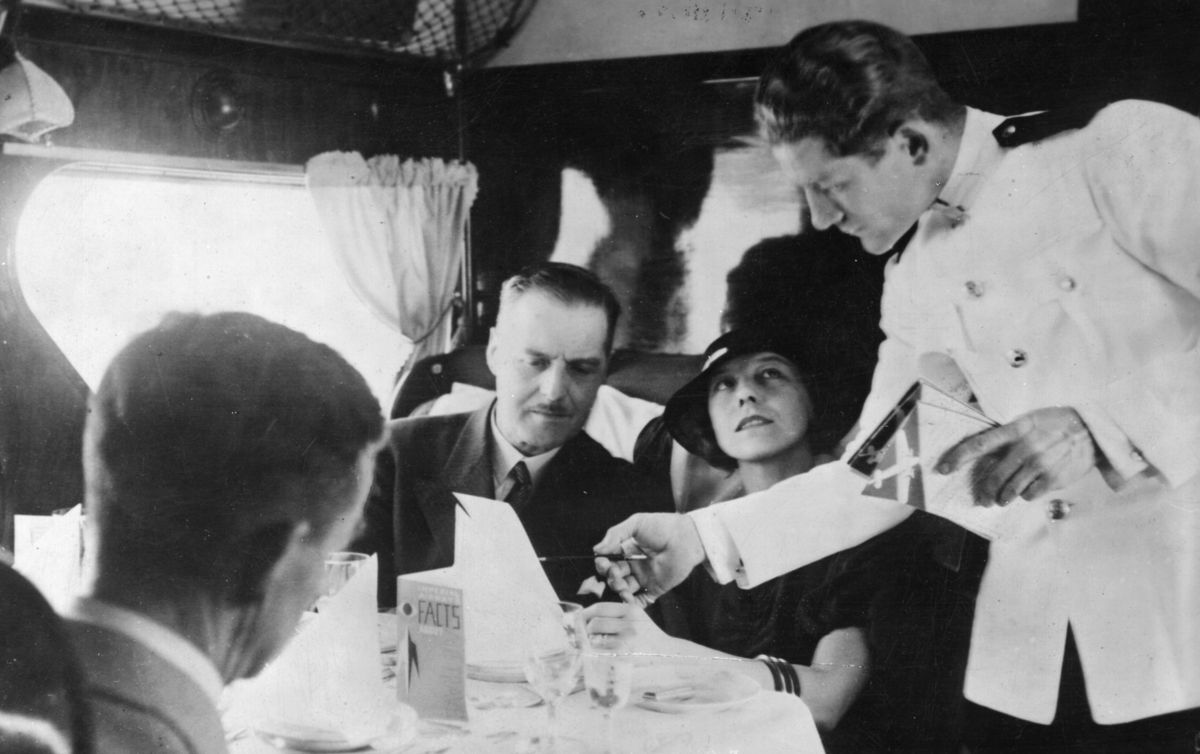
Waiter service aboard Imperial Airways ‘Scylla’ during its flight from London to Paris, circa 1935.
The years between World War I and World War II saw great advancements in aircraft technology. Airplanes evolved from low-powered biplanes made from wood and fabric to sleek, high-powered monoplanes made of aluminum, based primarily on the founding work of Hugo Junkers during the World War I period and its adoption by American designer William Bushnell Stout and Soviet designer Andrei Tupolev.
After World War I, experienced fighter pilots were eager to show off their skills. Many American pilots became barnstormers, flying into small towns across the country and showing off their flying abilities, as well as taking paying passengers for rides.
Eventually, the barnstormers grouped into more organized displays. Air shows sprang up around the country, with air races, acrobatic stunts, and feats of air superiority.
The air races drove engine and airframe development—the Schneider Trophy, for example, led to a series of ever faster and sleeker monoplane designs culminating in the Supermarine S.6B.
With pilots competing for cash prizes, there was an incentive to go faster. Amelia Earhart was perhaps the most famous of those on the barnstorming/air show circuit. She was also the first female pilot to achieve records such as the crossing of the Atlantic and Pacific Oceans.
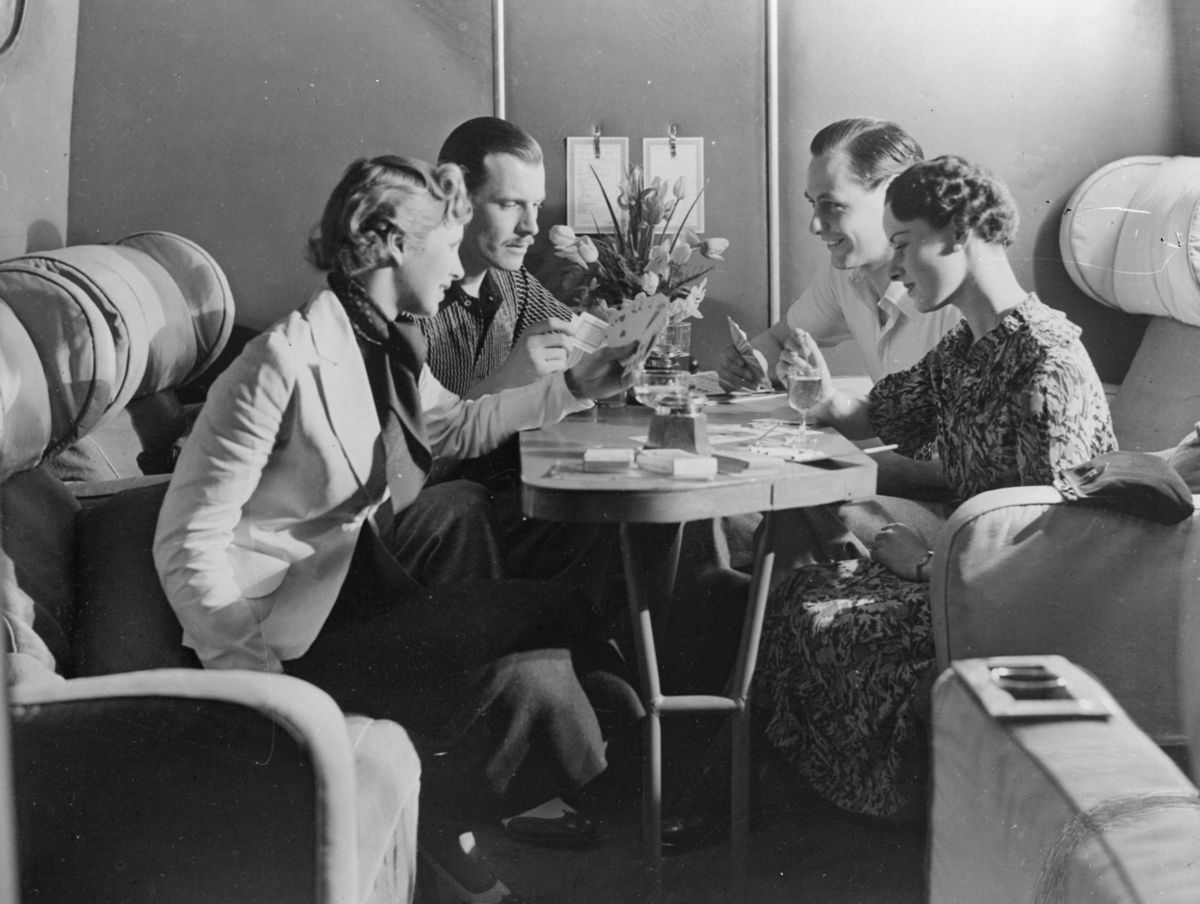
Passengers enjoying a drink and a game of cards in the cabin of an Imperial Airways plane in 1936.
Many aviation firsts occurred during this period. Long-distance flights by pioneers such as Sir Charles Kingsford Smith, Alcock and Brown, Charles Lindbergh, and Amy Johnson blazed a trail that new commercial airlines soon followed.
Many of these new routes had few facilities such as modern runways, and this era also became the age of the great flying boats such as the German Dornier Do X, American Sikorsky S-42, and British Short Empire, which could operate from any stretch of clear, calm water.

Preparing lunch on the Imperial Airways airplane ‘Scylla’, 19 November 1936.
After World War II, commercial aviation grew rapidly, using mostly ex-military aircraft to transport people and cargo. This growth was accelerated by the glut of heavy and super-heavy bomber airframes like the B-29 and Lancaster that could be converted into commercial aircraft.
The DC-3 also made for easier and longer commercial flights. The first commercial jet airliner to fly was the British de Havilland Comet.
By 1952, the British state airline BOAC had introduced the Comet into scheduled service. While a technical achievement, the plane suffered a series of highly public failures, as the shape of the windows led to cracks due to metal fatigue.
The fatigue was caused by cycles of pressurization and depressurization of the cabin and eventually led to the catastrophic failure of the plane’s fuselage. By the time the problems were overcome, other jet airliner designs had already taken to the skies.
USSR’s Aeroflot became the first airline in the world to operate sustained regular jet services on 15 September 1956 with the Tupolev Tu-104. The Boeing 707 and DC-8 which established new levels of comfort, safety, and passenger expectations, ushered in the age of mass commercial air travel, dubbed the Jet Age.
In October 1947, Chuck Yeager took the rocket-powered Bell X-1 through the sound barrier. Although anecdotal evidence exists that some fighter pilots may have done so while dive-bombing ground targets during the war, this was the first controlled, level flight to exceed the speed of sound.
Further barriers of distance fell in 1948 and 1952 with the first jet crossing of the Atlantic and the first nonstop flight to Australia.

Day cabin of an Imperial Airways flying boat, most likely of the Short Empire class, in August 1936.
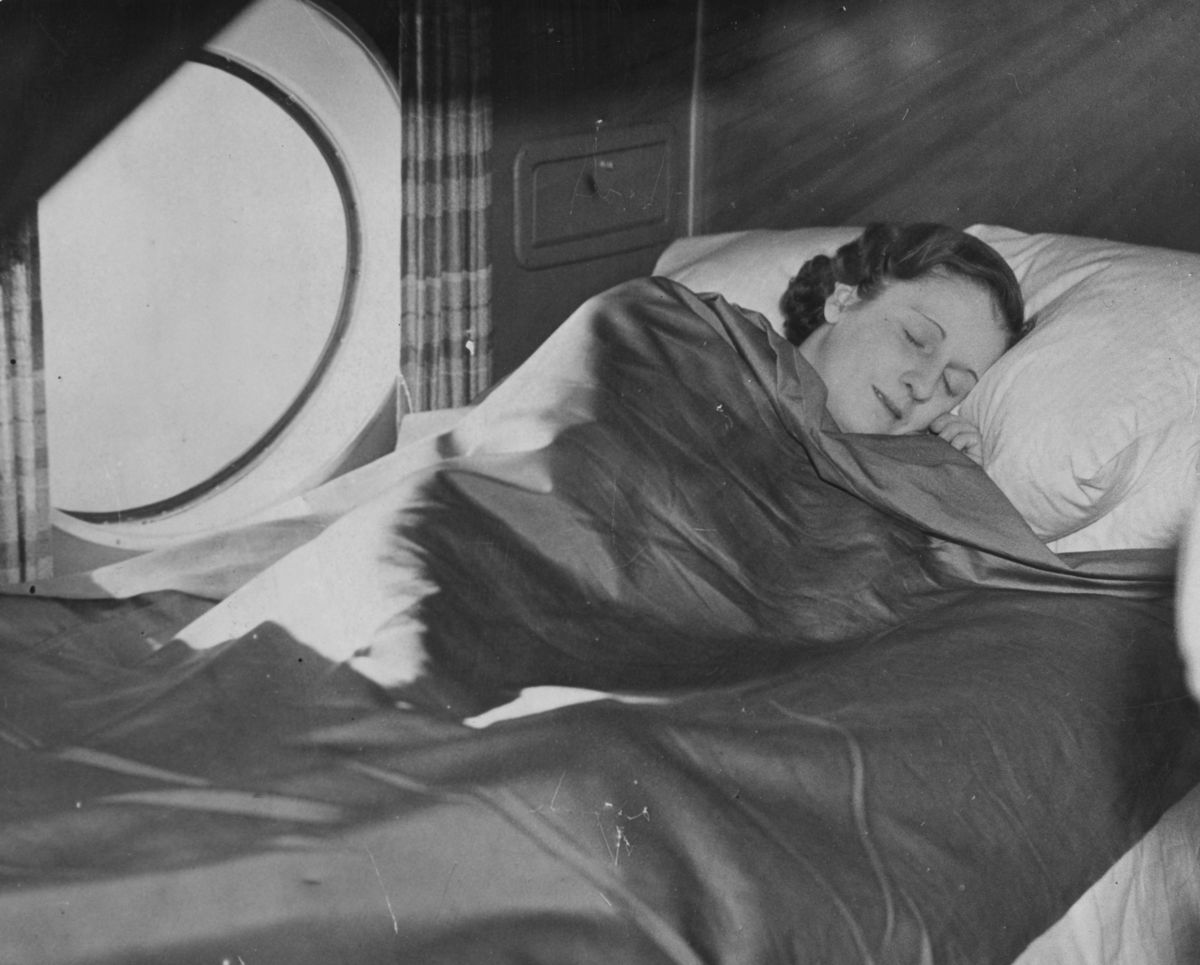
A sleeping berth on an Imperial Airways aircraft in March 1937.

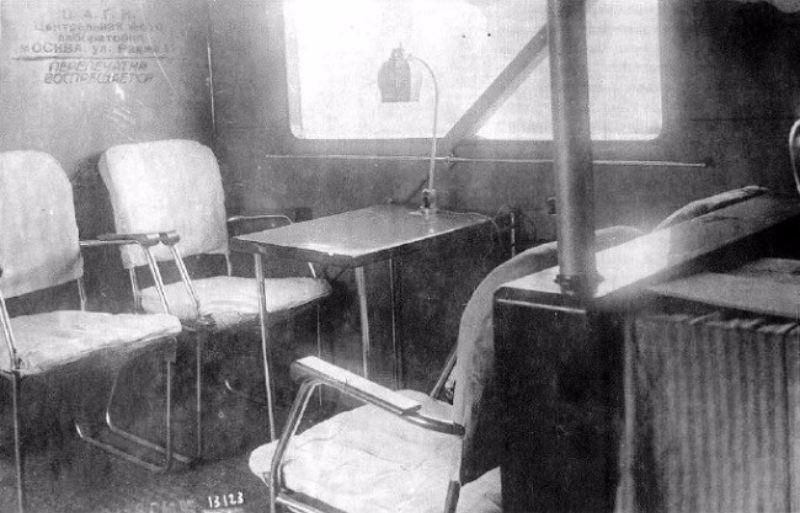


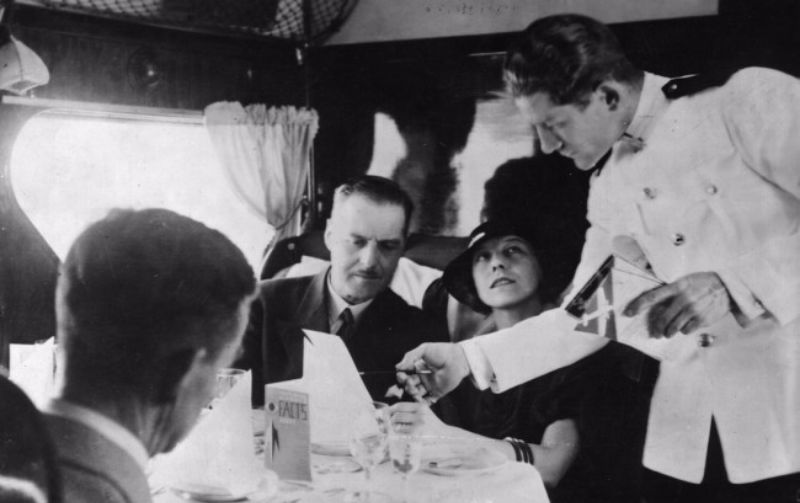









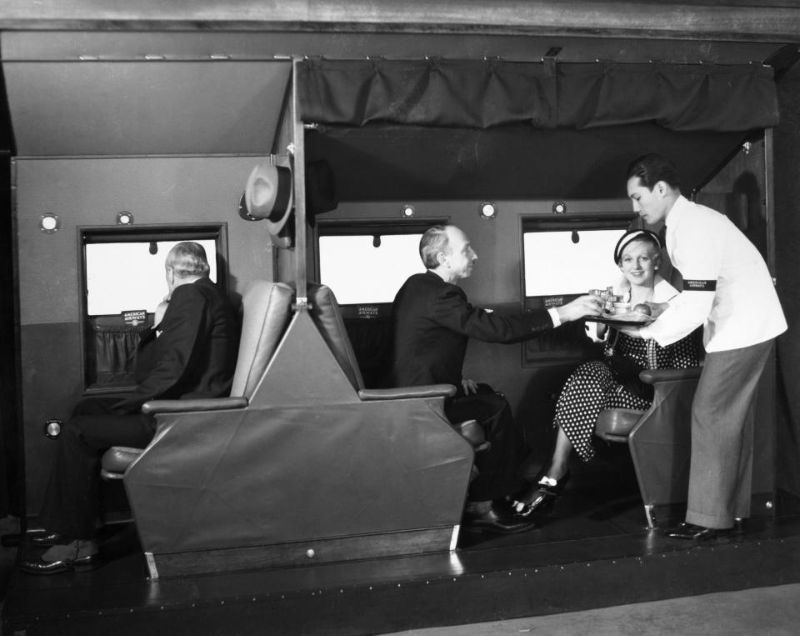


A male flight attendant walks with his arms linked with two female flight attendants in front of a small plane in the 1940’s.
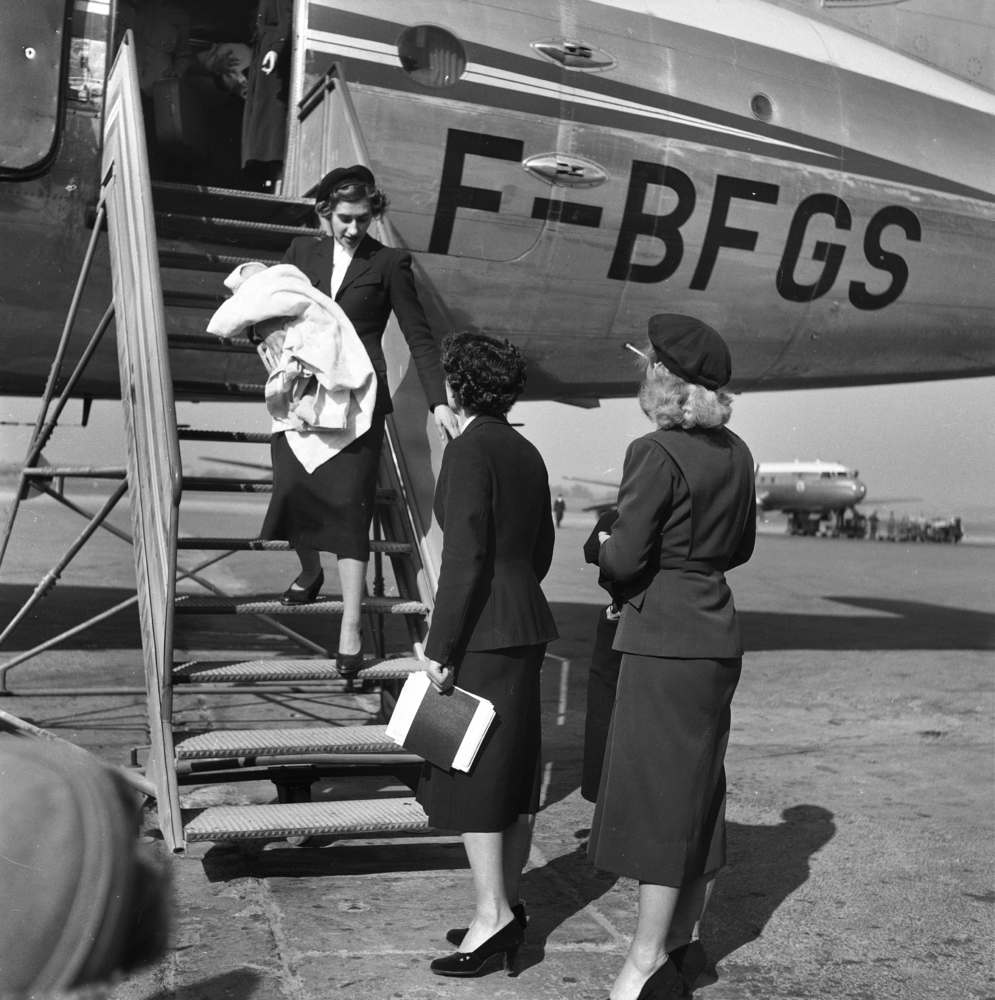
Stewardess in Le Bourget (Seine-Saint-Denis), about 1945.
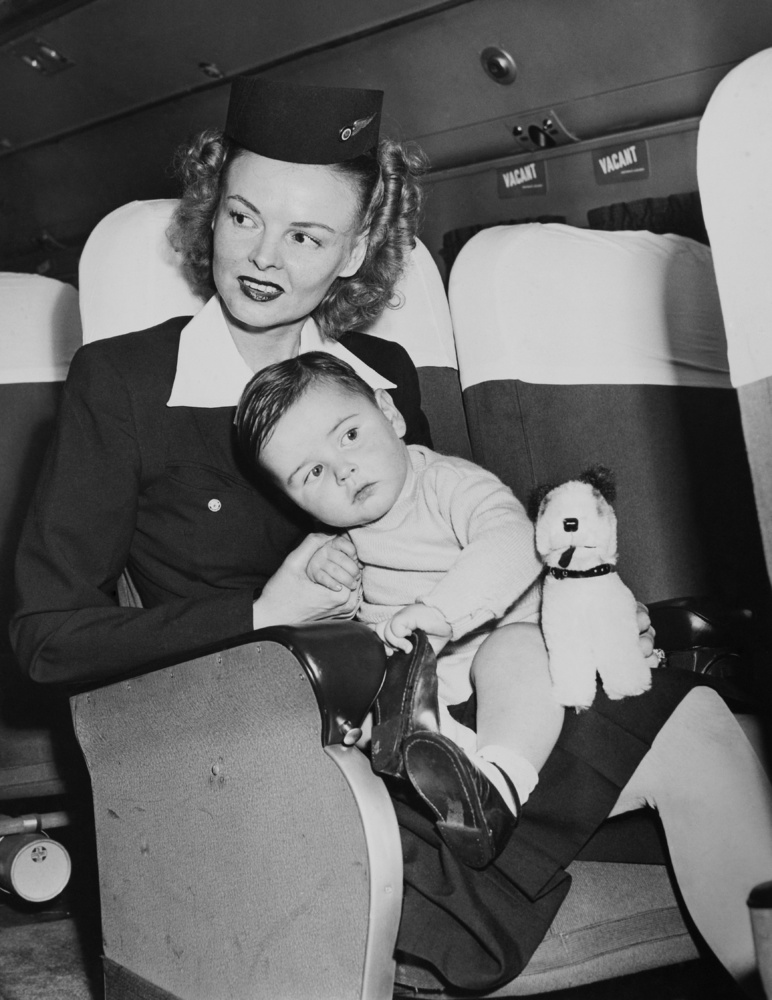
Baby travels by plane in New York In July 1945.
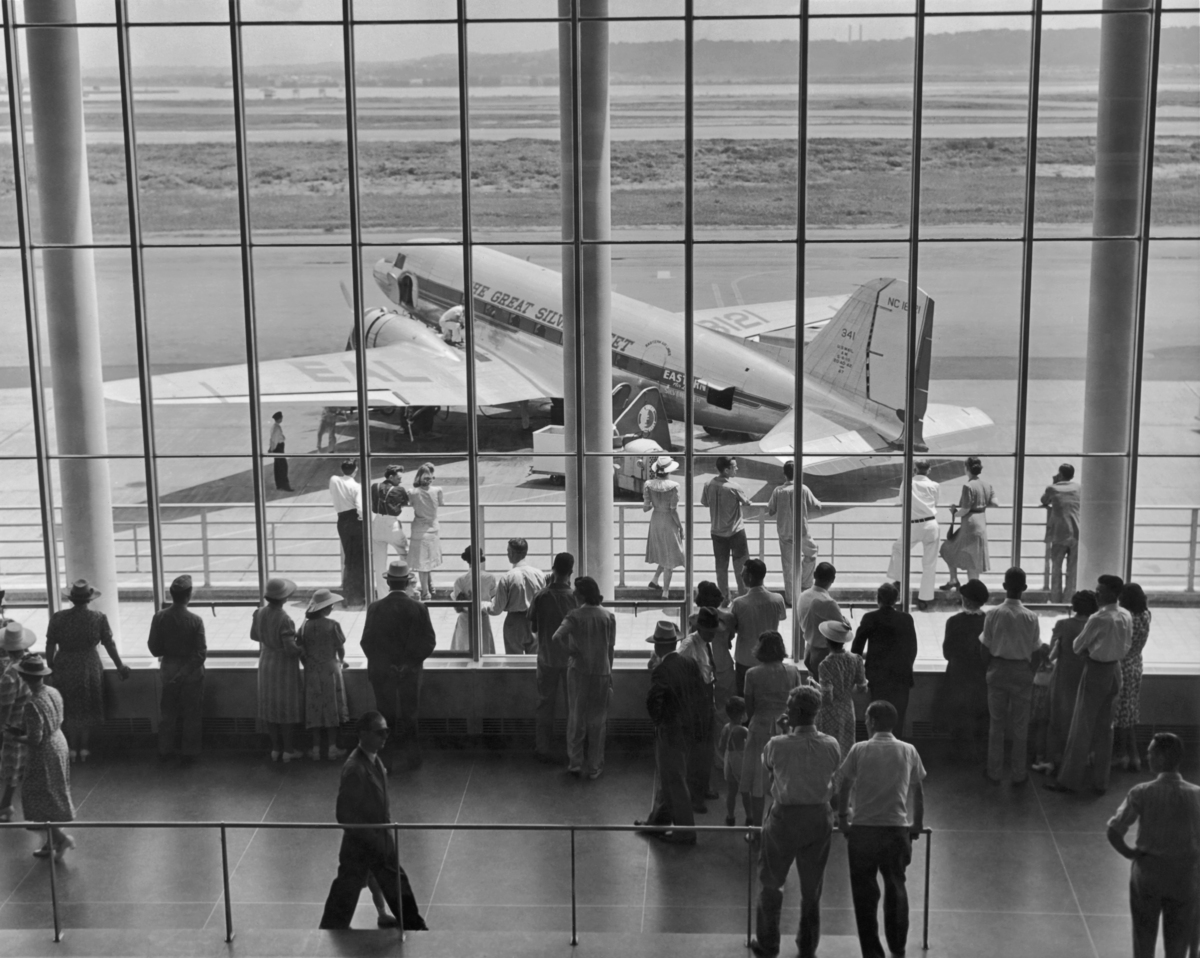
A Douglas DC-3 airliner of Eastern Airlines (‘The Great Silver Fleet’) seen through the window of a viewing gallery at an airport, circa 1945.
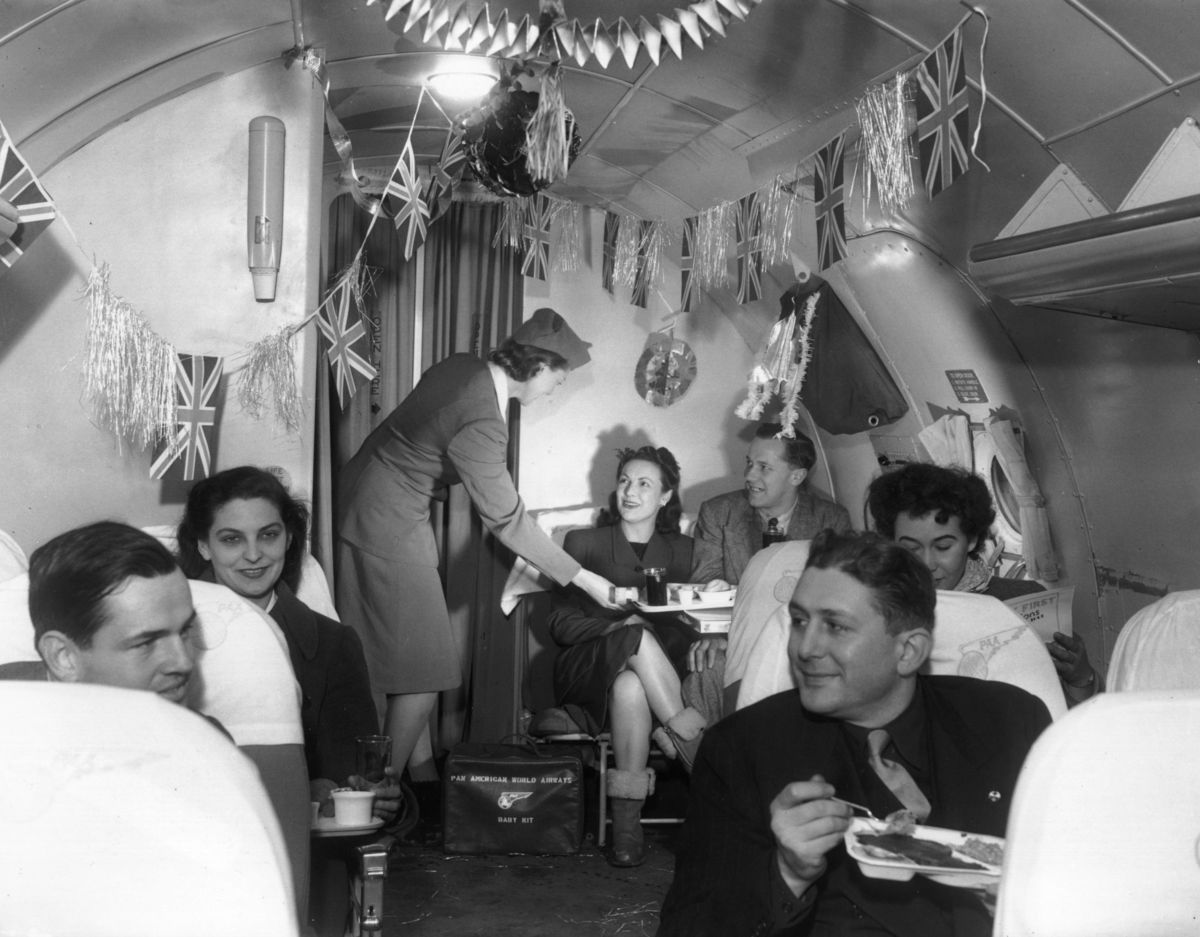
Air hostess Patricia Palley attends to passengers in the decorated cabin of a Pan-American airliner over the Atlantic on December 23, 1946.
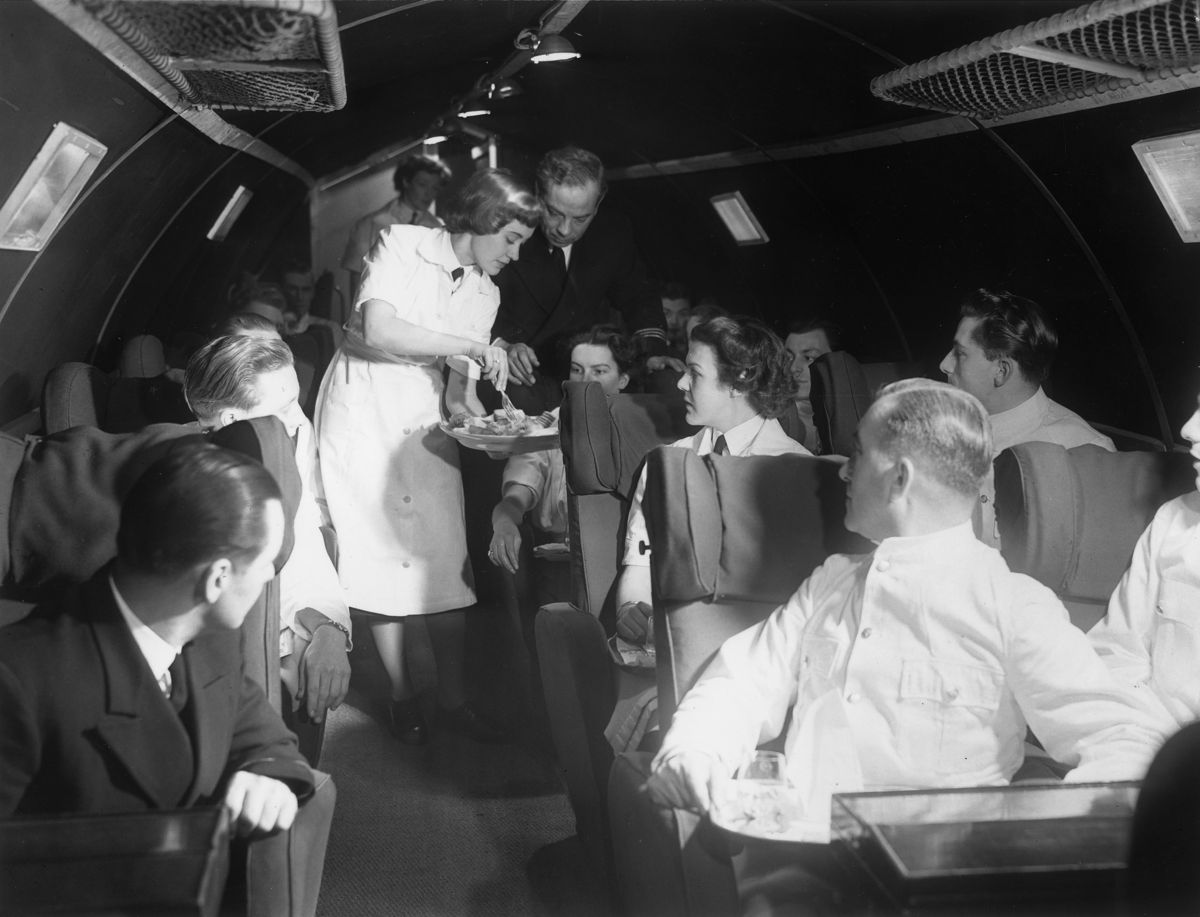
19th January 1950: Trainee air hostess, Claire Swan, during a training session in a BOAC mock aircraft.
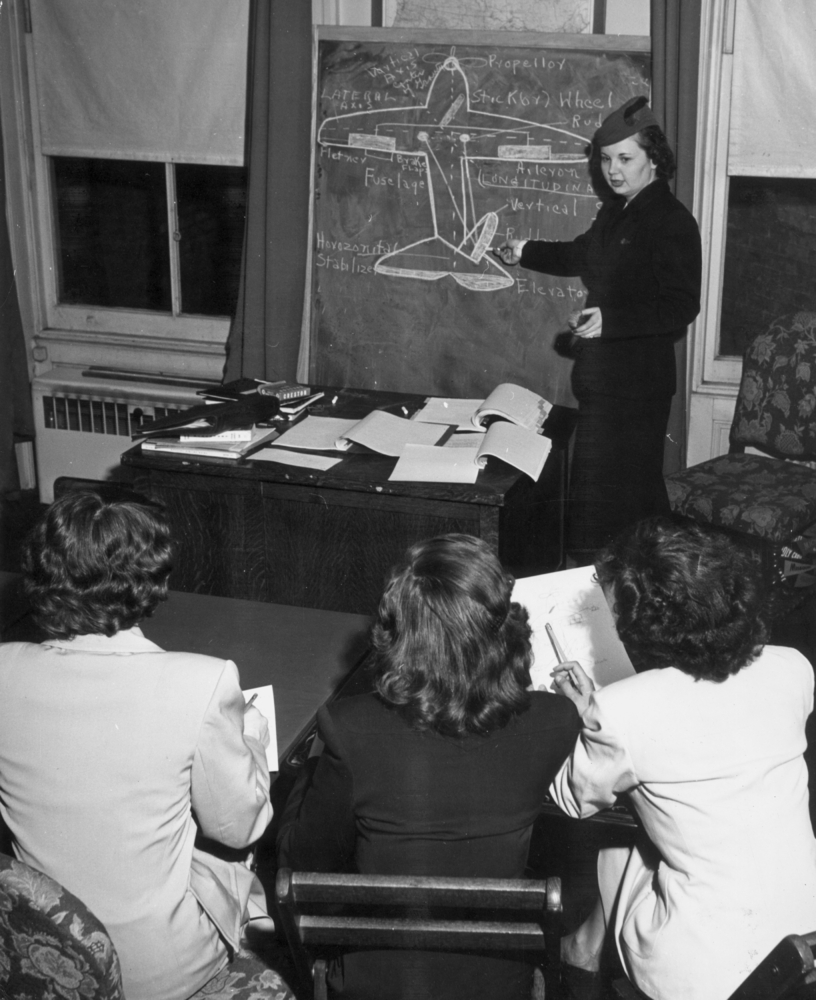
A female instructor stands at a chalkboard, pointing to a chalk diagram of an airplane while female students take notes at their desks during a stewardess training school, 1950.
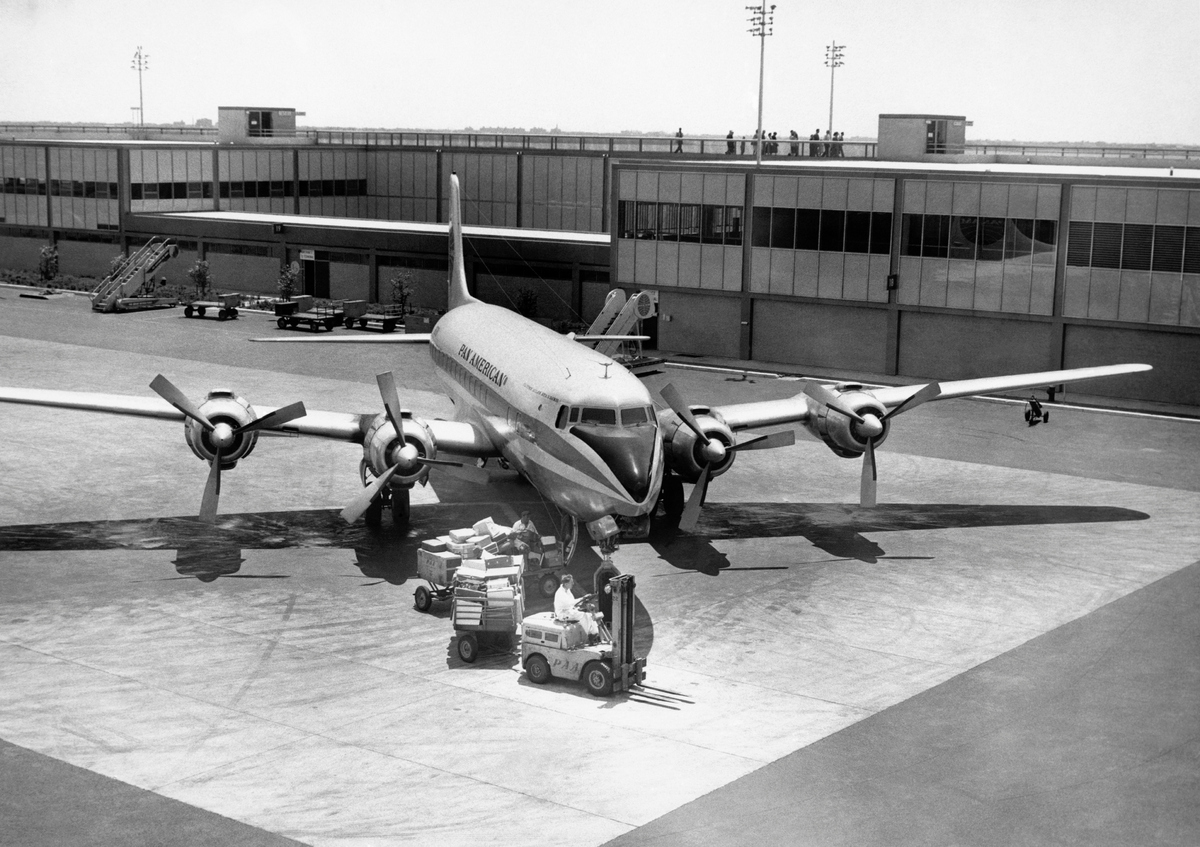
Luggage being unloaded from airplane, circa the 1950s.
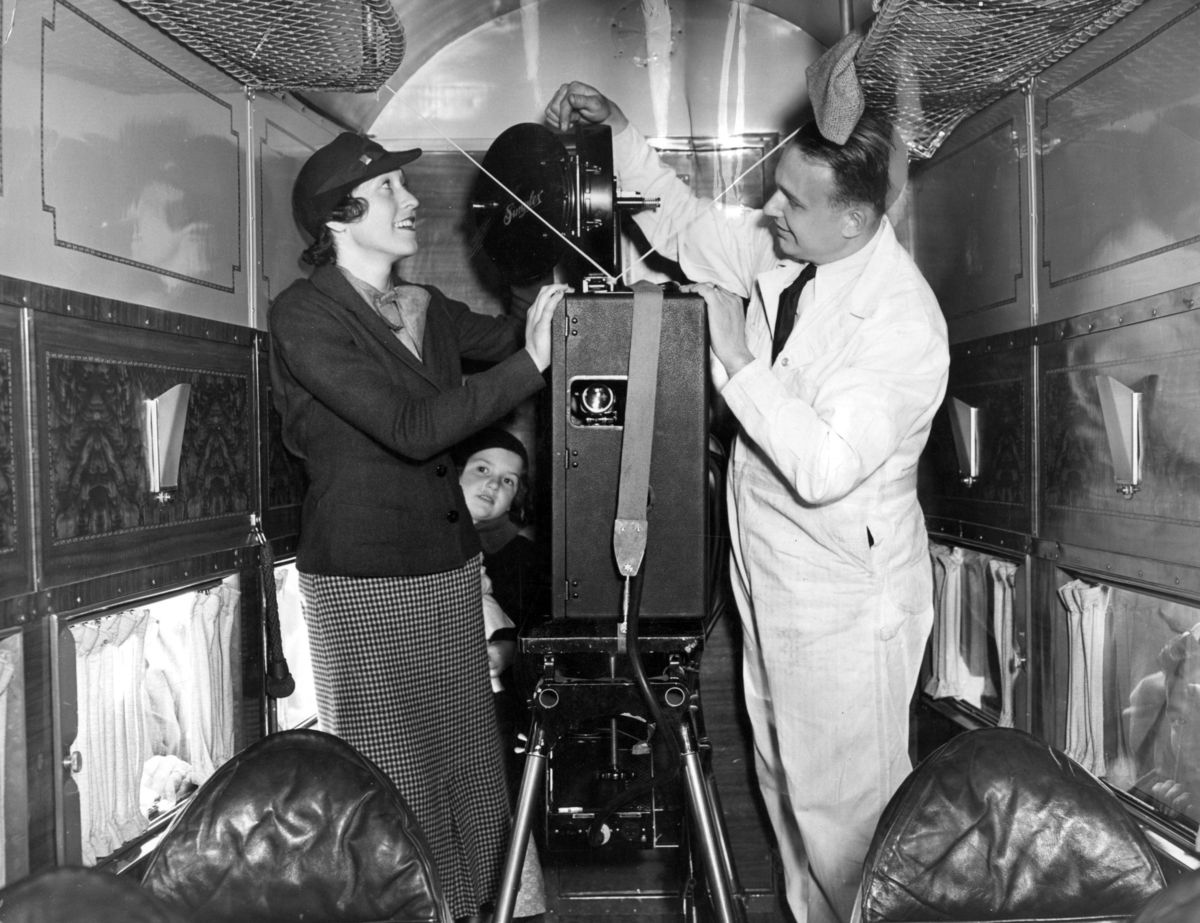
Luggage being unloaded from airplane, circa the 1950s.

Luggage being unloaded from airplane, circa the 1950s.

A Pan American World Airways flight attendant preparing in-flight meals in the galley of an airliner, circa 1950.
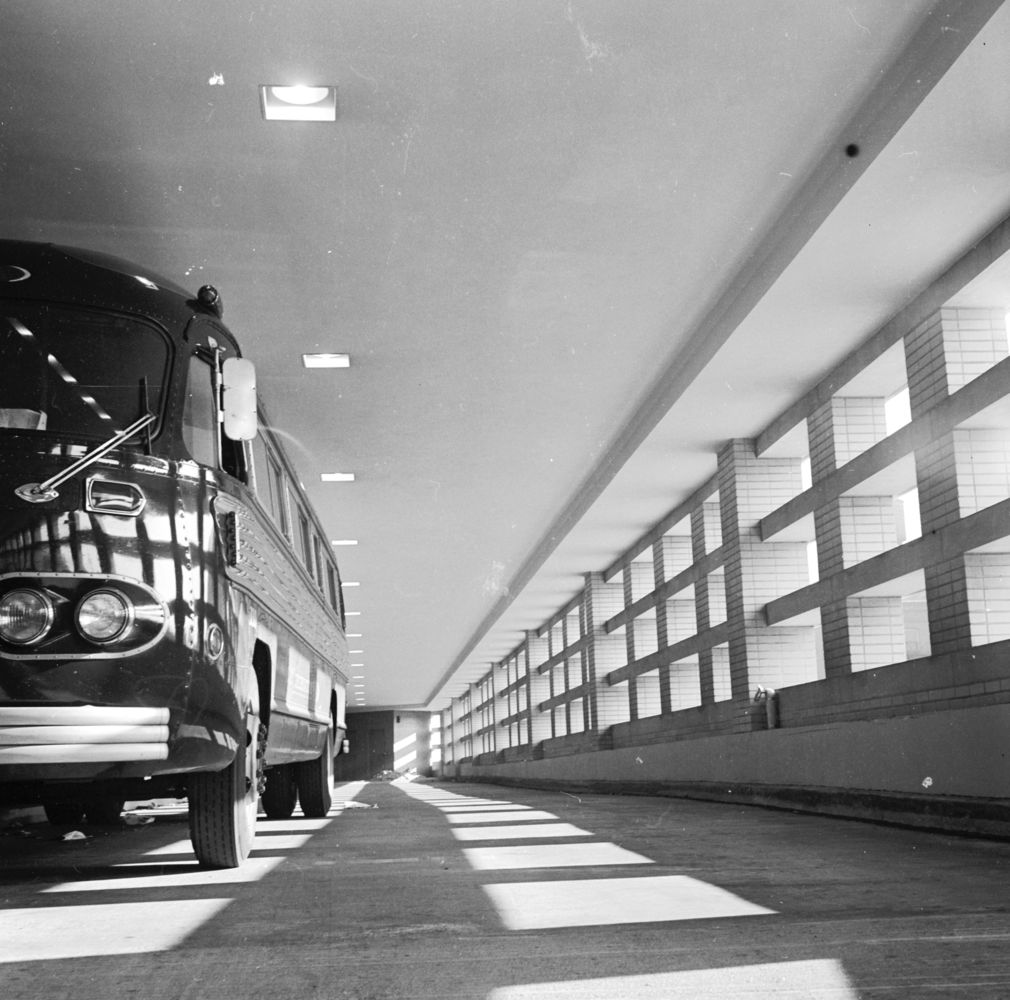
A bus in bus docks at New York’s East Side Airlines Terminal. The docks are open on one side to permit exhaust fumes to escape, circa 1955.
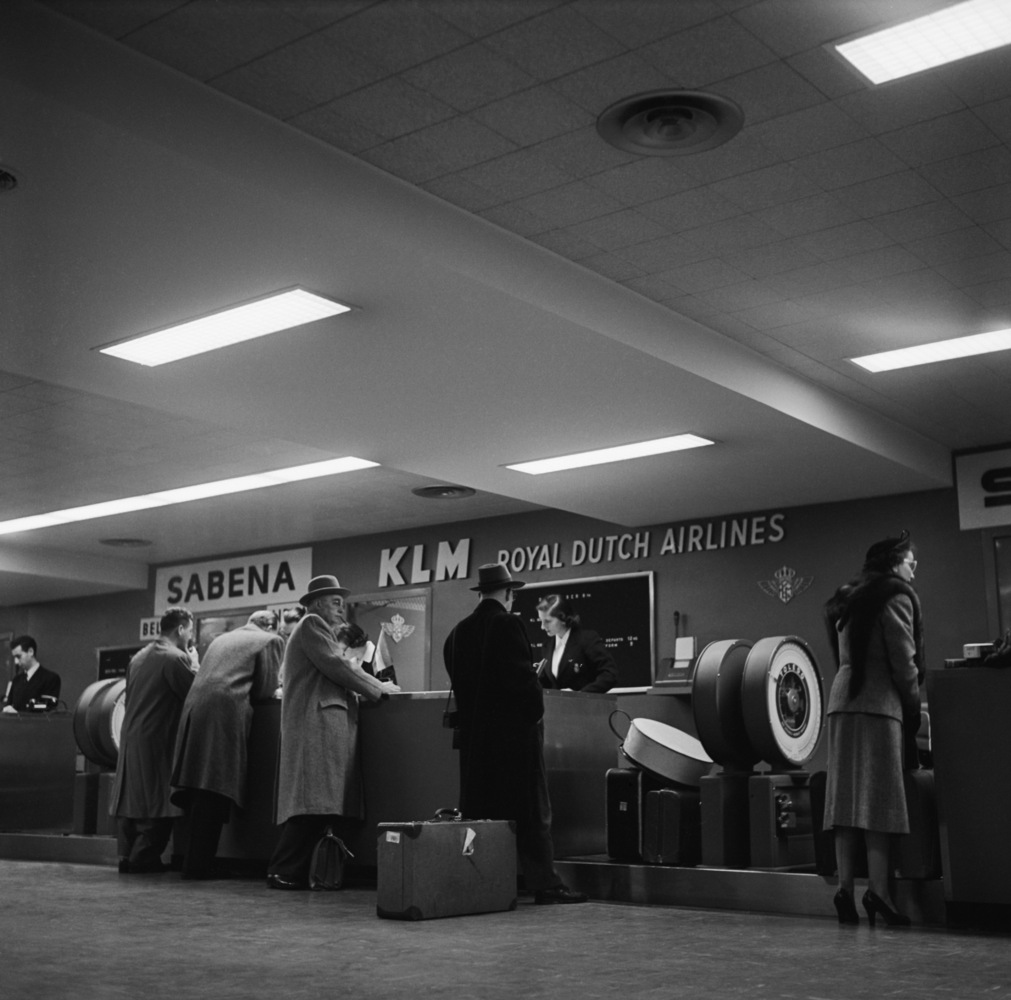
Passengers checking in at New York’s East Side Airlines Terminal, circa 1955.
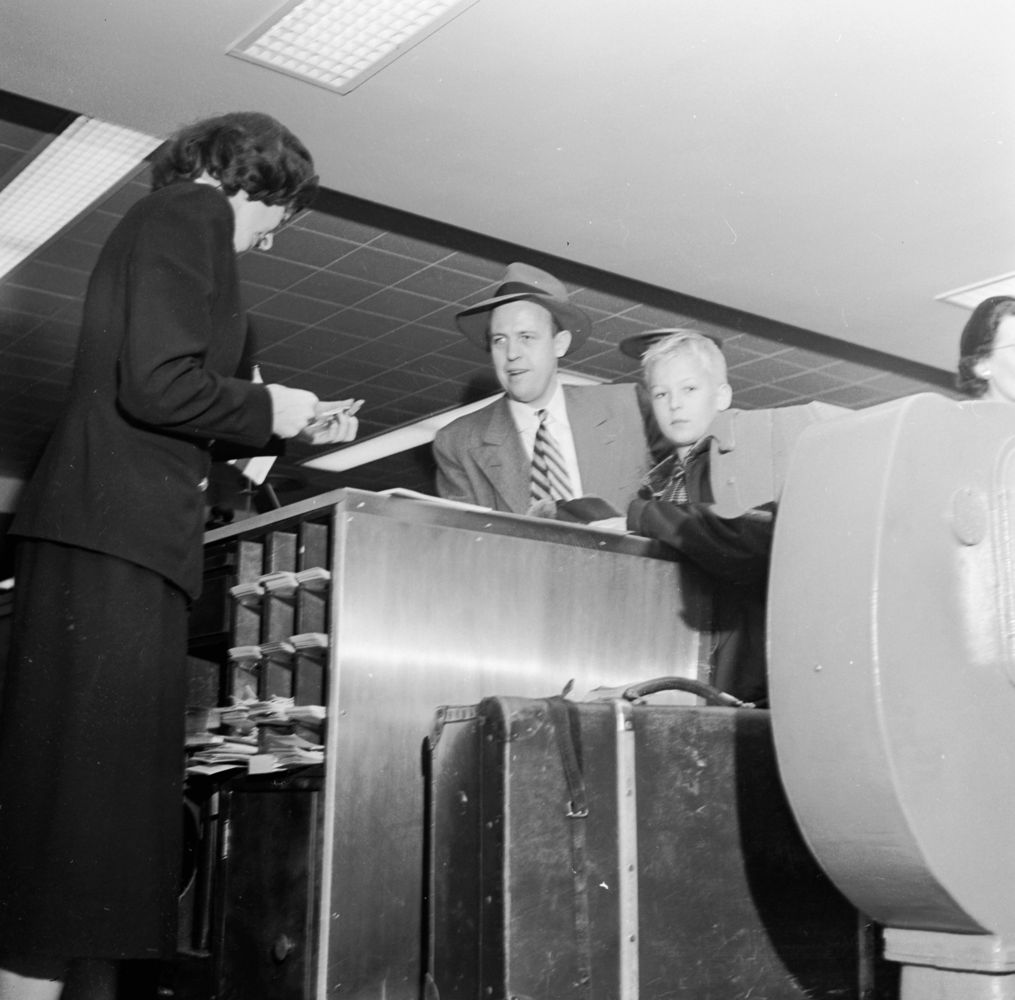
Passengers checking in their baggage at New York’s East Side Airlines Terminal, circa 1955.
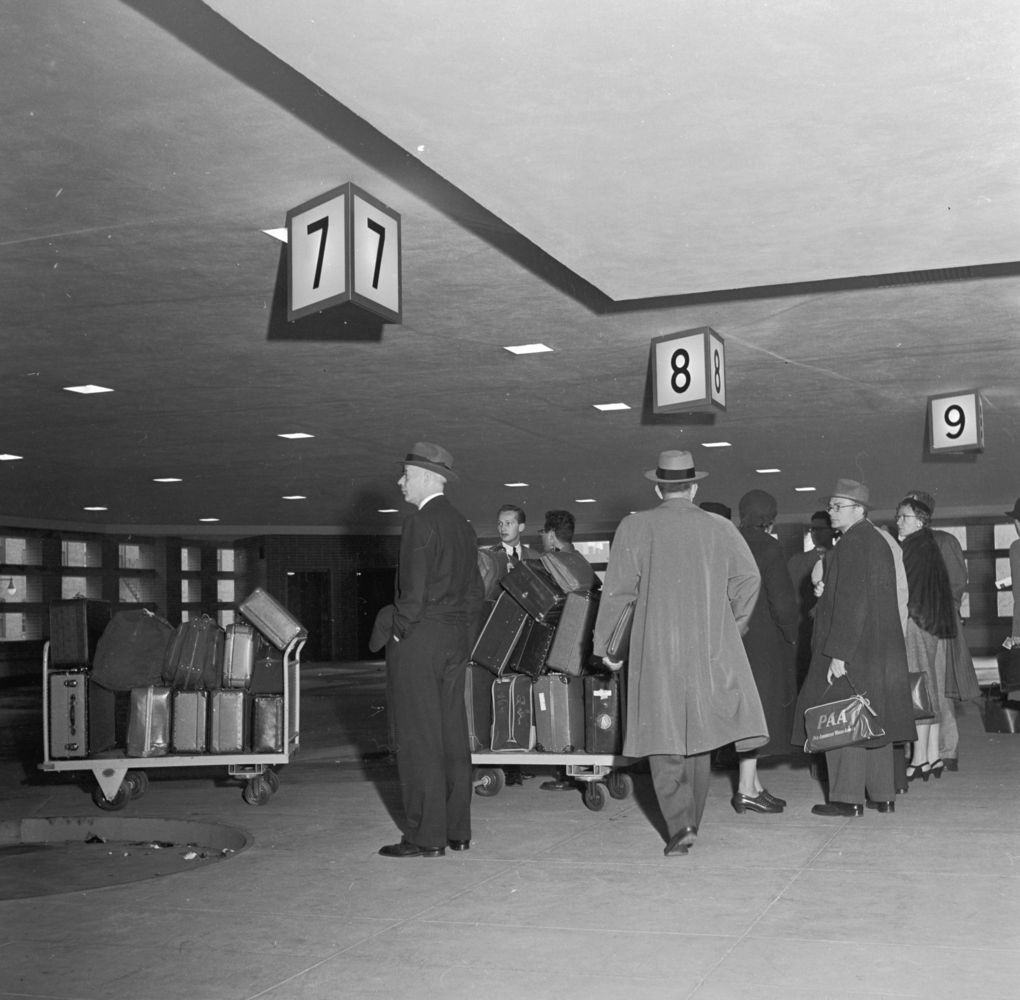
Passengers checking in their baggage at New York’s East Side Airlines Terminal, circa 1955.

New York’s East Side Airlines Terminal which operates on a 24-hour basis to provide transportation to every flight leaving from the city’s various airports, around 1955.
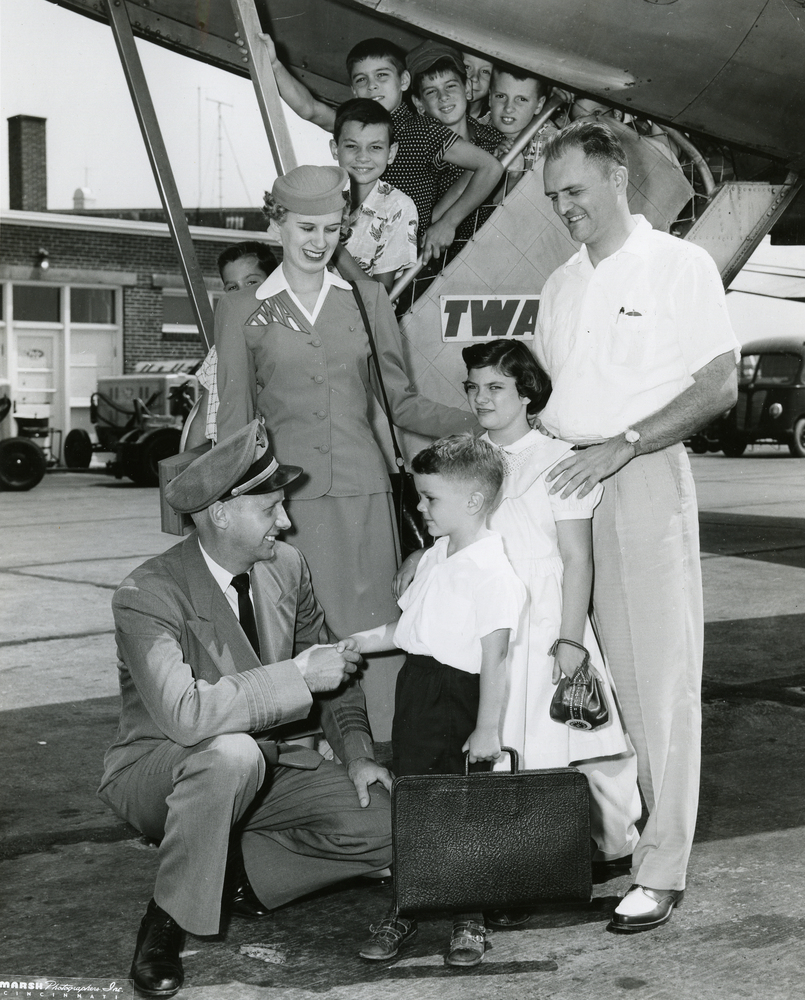
A TWA pilot and stewardess greet the passengers coming off the plane, ca.1950s, Cincinnati, Ohio.
(Photo credit: Wikimedia Commons / Huffington Post / Business Insider Magazine / Odd Stuff Magazine / Pinterest / Flickr).



